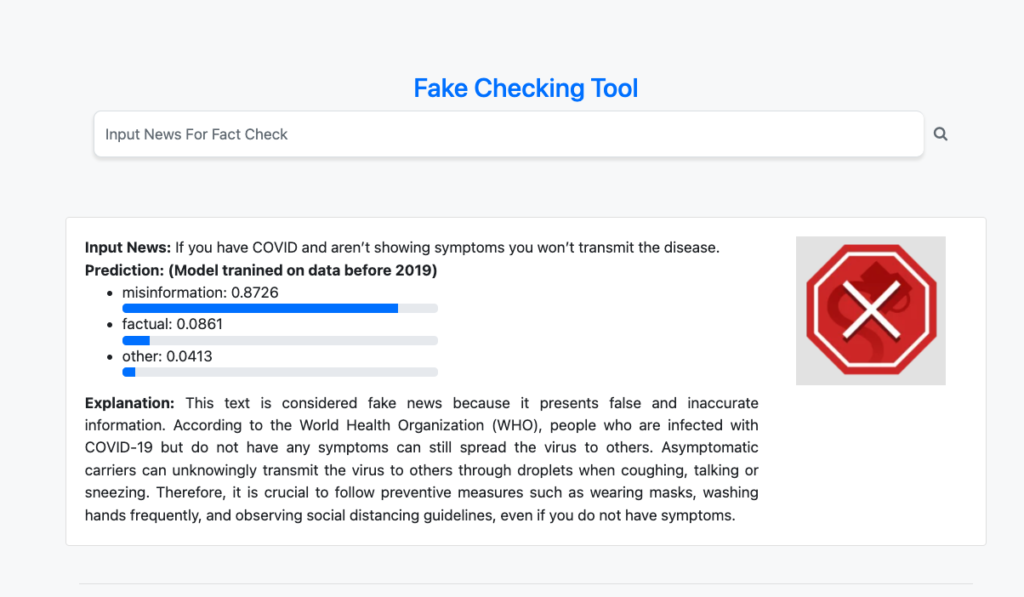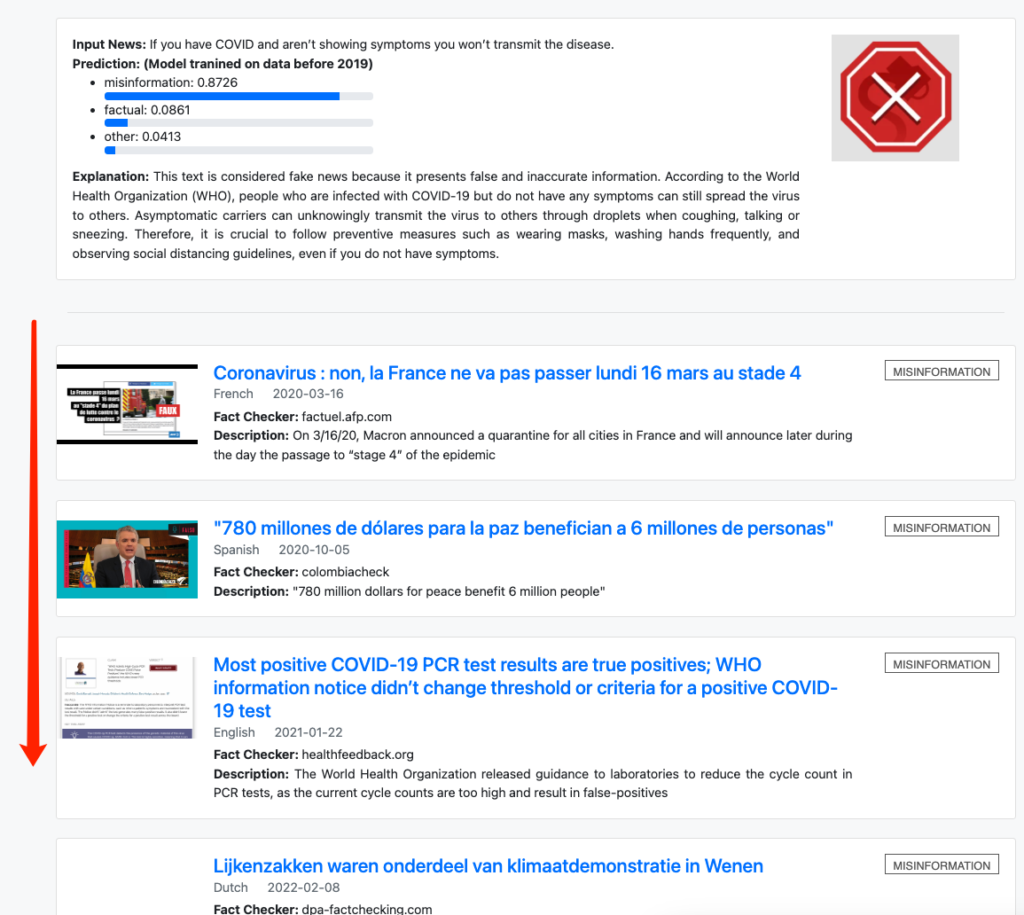Fact Checking Tool Demo
Label Annotation
- We trained a labe classifier to convert raw verdict such as partialy true, misleading, unprove, into three categories (misinformation, factual, other) .
- The label classifier can be found here.
Fact-Checking
- Classify input news.
- Return surrounding fact-checked news from our database.
Multi-lingual Support
- We trained the news classifer on our collected dataset, which contain 70+ languges of COVID-19 news information. The tool can be used detected news which spreading in most of countries in the world.
- We fetch the COVID-19 fake news on weekly basis in order to update our trainning corpus and classifier in a timely manner.
- The news classifer can be found here.
Label Anonotation
Navigating the Babel: Understanding Fact-checking Labels Across Languages
“Different fact-checking websites have their own unique systems of categorizing news. For instance, when PolitiFact, an American political fact-checking website, identifies a piece of news as false, it assigns a label of “Pants on Fire“. Conversely, FactCheck.kz, an organization from Kazakhstan, labels misleading news or news susceptible to manipulation as “Manipulation“. Similarly, French and Polish fact-checking websites use their local terms for labeling news as false. Examples of different news verdicts are shown in Table 1.
We trained the news classifer on our collected dataset, which contain 70+ languges of COVID-19 news information. The tool can be used detected news which spreading in most of countries in the world. The experiment result and Classifier API can be access vis Huggingface.
| Normalisation | Original Classes | Definition |
|---|---|---|
| Factual | Correct, True Correct Attribution |
No important details are lacking from the graded assertions, and they are all obviously true. News from selected reliable news organisations discussed in Section (reference here) |
| Misinformation | Pants on fire, Fake, inaccurate, misleading, fake news, conspiracy theory, exaggerated, two Pinocchios, Scam, Miscaptioned, barely-true, Labeled Satire | The fact-checker determined that the news is non-true and that the substance of the story contains discriminatory and misleading phrase |
| Misinfomration | Partly false, Partly true, partially correct, half-true | The news can not be considered as either entirely true or entirely false. In other words, news contain false information while part of the content is true |
| Others | No evidence, in dispute needs context, outdated |
If there lacks robust evidence about the news claim, an article would neither be categorised as true, false or partially false. This category includes articles in controversy and unproven articles. |
Fact Checking - Unleash the Power of Our Fact-Checking Tool
Our cutting-edge fact-checking tool, leveraging advanced AI algorithms, confidently navigates the information landscape, analyzing and classifying news to combat misinformation and promote transparency.
Step 1: Input Your News
Feed the news you want to verify into our fact-checking tool. For example, let’s consider the statement: “If you have COVID and aren’t showing symptoms you won’t transmit the disease.” from conversation.

Step 2: Instant Analysis
Our tool quickly scans the statement and returns a verdict, complete with a probability score. This score represents the likelihood of the news being classified under a certain category: misinformation, factual, or others.
Step 3: Understand the Verdict
Accompanying the verdict is an explanation of why the news has been classified as such, providing you with a comprehensive understanding of the verdict. This feature is designed to promote transparency and to help you understand the reasons behind the classification.

Step 4: Visual Confirmation
For a quick and clear understanding, our tool provides a verdict image that visually represents the classification. This image serves as an easy-to-understand visual cue of the news’ credibility.
Step 5: Dive Deeper
Our tool also retrieves relevant data from our extensive misinformation database. This allows you to cross-verify the news with other sources and gain a deeper understanding of its context and implications.
In a world where misinformation spreads as quickly as truth, it’s essential to have the right tools to discern fact from fiction. Give our fact-checking tool a try today and empower yourself with the truth.
